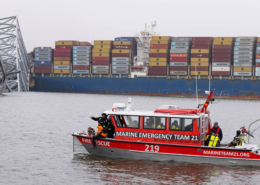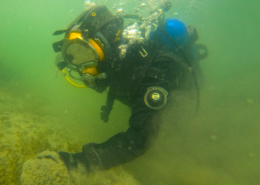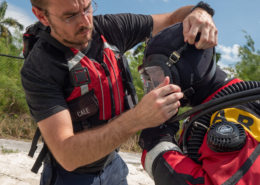80% of All Ice Rescues Begin with a Dog
by: Bo Tibbetts
Ice rescue doesn’t always mean a person has fallen through the ice – most of the time we see golden retrievers and black labs involved; these dogs love the water no matter what the season. Most dogs love chasing things; besides sleeping or eating, it’s their favorite pastime. If you throw a ball, these dogs are on it. They also love chasing rabbits, squirrels, and even deer. With respect to chasing anything that moves and having no ability to care about any danger that may be present, these dogs and their owners often find themselves in precarious situations. Particularly in the winter months, these dogs find themselves on ponds and lakes that are frozen over. This scenario often goes bad rather quickly as the dog falls through thin, weak ice into the icy water below. What is the best way to rescue these animals in this situation? Keep in mind as a rescuer, your safety is priority.
Planning
In most dog rescues, the plan develops as the rescue progresses. Typically, we see the rescuer crawl out on the ice to the dog and then decide what they are going to do. The rescuer has a couple of choices at this point. He can try to physically grab the dog and pull the dog out of the ice and water, or the rescuer can make the decision to get in the water with the dog and help assist the dog back on top of the ice. Regardless of which scenario the rescuer decides to choose, neither of these scenarios are a satisfactory decision or solution. Let’s examine why. The rescuer must ask themselves these questions: what does this look like from the dog’s vantage point? What is the dog seeing? The rescuer is suited up in an oversized ice rescue suit, he doesn’t even look human, and at this point, the dog is trapped and he may be scared of the rescuer. The rescuer is tethered to shore-based personnel and the rescuer is army crawling very slowly out to the dog. Most of the time, the dog owner is frantically pacing the shore; he may be calling out to the pet in an attempt to calm the dog. Nothing about this situation calms the dog. You must remember the dog is “their child in distress.”
The dog sees the rescuer who looks like an alien and the dog desperately tries to get away from the rescuer. As the rescuer closes in, the dog is threatened, scared, and most likely in survival mode. Keep in mind, he is fully equipped with teeth and any dog will defend themselves from perceived danger. Even the nicest dogs will bite in this situation; yes, the dog can and will bite the rescuer! Dog bites happen, often to the hands of the rescuer. While this is certainly a big concern, I want to point out a much greater concern than the hand of the rescuer – what about their face? Think about the proximity of the rescuer’s face in relation to the dog’s mouth. The rescuer’s head is lined up perfectly for a bite to the face. Consider the rescuer’s eyes; eyesight is pretty important, right?
Control
It is imperative to control the dog. Rescuers sometimes use dog-catching devices for ice rescue purposes; these devices are not buoyant as they are designed for land use. These devices are also dependent on the rescuer’s ability to maintain the pull cord and keep the dog stabilized in the water. The rescuer is still in direct contact with the dog. How then, does the rescuer get the dog out of the water and back on top the ice while still maintaining the dog and the rescue device? Keeping the dog and rescuer independent of each other is very important. How can this be achieved? By utilizing Ice Rescue System’s 911 Reach Pole coupled with the Retriever 120’. This dog rescue system is specifically designed to keep the rescuer independent of the dog and safe from a bite while accomplishing a safe, humane, dog-friendly rescue.
Execute the system
This system is deployed by pre-loading the 911 reach pole with the retriever 120’ snare loop prior to attempting the rescue. The rescuer is still tethered to shore personnel as the rescuer belly crawls out to the dog but now the rescuer has a seven-foot reach. The rescuer snares the head of the dog with the pre-loaded snare, sets the snare, lets go of the rope, and shore personnel are now in control of the dog’s head. While shore personnel maintain the head, the rescuer is able to get behind the hindquarters of the dog with the 911 reach pole and assist the dog back onto the ice. The rescuer never has to physically touch the dog or put themselves in harm’s way. As an added bonus, the rescuer still has the 911 reach pole in case they need it for a potential self rescue.
We strongly believe in protecting our rescue personnel at all costs. Consider a safer approach to animal ice rescues. Dog bites are preventable!


 Photo By: Defense Visual Information Distribution Service
Photo By: Defense Visual Information Distribution Service


 Y. ZIN
Y. ZIN


Deixe uma resposta
Want to join the discussion?Feel free to contribute!